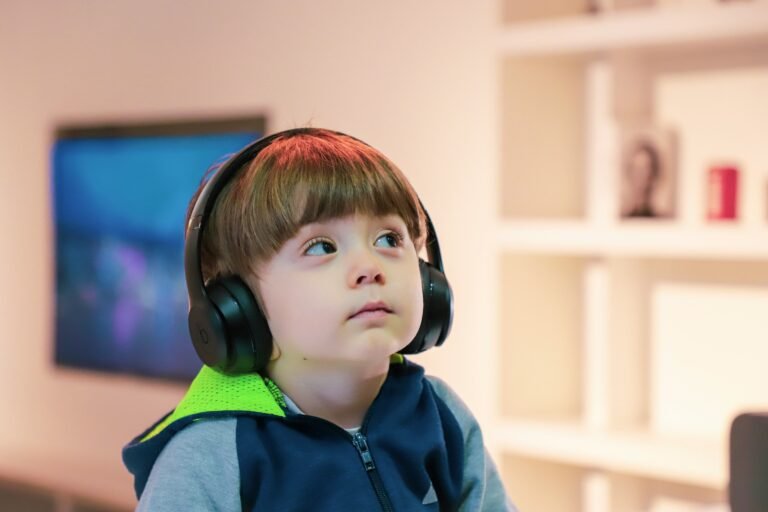What does high-functioning autism feel like?
High-functioning autism, sometimes referred to as mild autism or Level 1 Autism Spectrum Disorder (ASD), is often associated with individuals who require minimal support in daily life but still experience the distinct traits and challenges of autism. For someone with high-functioning autism, life can be a complex mix of strengths, sensitivities, and unique experiences. Many high-functioning autistic individuals navigate relationships, work, and routines, often managing their traits privately. However, they still face difficulties that can be exhausting, confusing, and sometimes isolating.
Here’s a look at what high-functioning autism might feel like and the common experiences that shape daily life for those on this part of the autism spectrum.
1. Feeling Different in Social Situations
For someone with high-functioning autism, social interactions can feel like navigating a world with unwritten rules. Many people with high-functioning autism describe feeling like they’re “outside” of social groups, even when they’re physically present. Conversations, small talk, and social cues may feel confusing or awkward. This can result in:
- Difficulty with eye contact: While eye contact is expected in social interactions, it can feel uncomfortable, intense, or even overwhelming for someone with autism. This often leads to looking away, which may make social interactions feel even more challenging.
- Challenges with small talk: Many autistic individuals find small talk uninteresting or difficult to understand, preferring deep, meaningful conversations.
- Feeling like an “outsider”: High-functioning autistic people often feel like they don’t “fit in,” leading to social withdrawal or feelings of isolation, even when they have friends or are part of groups.
Internal Perspective
From the inside, social interactions may feel like a performance. People with high-functioning autism often “mask” or “camouflage” their traits, consciously adopting behaviors to fit in. While this can help them function socially, it can be exhausting and may lead to burnout over time.
2. Sensory Sensitivities
For those with high-functioning autism, sensory sensitivities are a common experience. Ordinary environments can feel overwhelming due to heightened responses to sounds, lights, textures, or smells. This might look like:
- Noise sensitivity: Loud sounds, such as sirens, crowded rooms, or even background music, can feel physically painful or distressing.
- Aversion to certain textures: Sensory sensitivities might extend to clothing (such as tags or specific fabrics), food textures, or environmental elements.
- Difficulty with lighting: Bright lights or certain types of lighting (like fluorescent lights) can cause discomfort, sometimes leading to headaches or fatigue.
Internal Perspective
To someone with high-functioning autism, sensory sensitivities can feel all-consuming, especially when they can’t control the environment. Sensory overload might make it hard to think clearly, focus, or even stay calm. Sensory triggers can cause stress, anxiety, or the need to withdraw from overwhelming situations.
3. Intense Focus on Specific Interests
High-functioning autism often includes a passionate focus on particular interests. Autistic individuals may become deeply immersed in a subject or hobby, learning everything they can about it and spending significant time engaging with it. This can look like:
- Specialized knowledge: A person may become an expert in a specific topic, such as science, history, technology, or a niche hobby.
- Passion-driven conversations: They may want to talk about their interest, sometimes unaware that others don’t share the same level of enthusiasm.
- Comfort and familiarity: These intense interests provide a sense of comfort, predictability, and enjoyment that’s hard to find elsewhere.
Internal Perspective
For many people with high-functioning autism, their interests are a source of joy and stability. These interests offer a refuge from the unpredictable nature of social interactions and sensory overwhelm. Engaging with these topics can be relaxing, empowering, and a major source of self-esteem.
4. Preference for Routine and Predictability
Routine provides a sense of security for many people with high-functioning autism. A structured day reduces uncertainty and minimizes stress, allowing them to focus on tasks without feeling overwhelmed. Common experiences related to routine might include:
- Anxiety with change: Unexpected changes to plans or disruptions in routine can feel distressing or even lead to anxiety.
- Reliance on specific daily patterns: Routines around meals, sleep, or activities can bring stability, helping autistic individuals manage daily life more comfortably.
- Difficulty adjusting to new environments: Changing schools, jobs, or homes can be challenging and require extra time to adapt.
Internal Perspective
For someone with high-functioning autism, changes in routine might feel like losing control over an otherwise manageable world. Predictability provides comfort, and any deviation can feel like a significant disruption. This strong need for structure isn’t about being inflexible; it’s a way to reduce anxiety and maintain stability.
5. Emotional Intensity and Regulation Challenges
Autistic individuals often experience emotions intensely, which can make managing feelings more difficult. Some might experience “meltdowns” or “shutdowns” when they feel overwhelmed by sensory input, stress, or emotional situations. Common experiences include:
- Meltdowns: These are outward expressions of intense emotions, which might include crying, yelling, or physical responses.
- Shutdowns: When overwhelmed, a person might withdraw, becoming silent or disengaged as a way to cope.
- Difficulty expressing emotions: Many people with high-functioning autism may struggle to describe their feelings, leading to internal frustration.
Internal Perspective
Emotional regulation challenges can feel like riding a rollercoaster with no brakes. Emotional intensity may feel disproportionate to the situation, making it hard to stay calm or communicate effectively. Meltdowns and shutdowns are not choices; they’re often uncontrollable responses to overwhelming stress.
6. Executive Functioning Challenges
Executive functioning involves planning, organizing, and completing tasks, and is often challenging for people with high-functioning autism. These challenges can impact their ability to manage responsibilities at work, school, or home, manifesting as:
- Difficulty starting or finishing tasks: Initiating or completing projects can be challenging, even when there’s motivation.
- Time management struggles: Being on time or sticking to deadlines may require extra effort and support.
- Reliance on reminders and routines: Many people use external aids, like lists, reminders, or calendars, to help them stay on track.
Internal Perspective
Executive functioning challenges can make daily life feel overwhelming, as even simple tasks require more focus and energy than for neurotypical individuals. This can lead to frustration, feelings of inadequacy, or self-doubt, especially when others don’t understand the level of effort required.
7. Balancing the Need for Solitude and Social Connection
People with high-functioning autism often face a complex balance between enjoying social connections and needing time alone to recharge. While many enjoy close relationships, socializing can be exhausting due to the need to mask behaviors or manage sensory sensitivities. This might involve:
- Avoiding large gatherings: Crowded places or group events can feel overwhelming, leading them to prefer smaller, familiar settings.
- Feeling drained after social interactions: After spending time with others, individuals may need time alone to recover.
- Difficulty maintaining relationships: Relationships require sustained social effort, which can be draining or challenging to navigate.
Internal Perspective
To someone with high-functioning autism, social interactions can feel rewarding but often exhausting. Solitude allows them to decompress, process experiences, and feel at ease. Balancing this need for alone time with the desire for meaningful connections can be a delicate, ongoing challenge.
Table: Common Experiences of High-Functioning Autism
| Experience | Description |
|---|---|
| Feeling Different Socially | Challenges in social situations, feeling like an outsider, masking to fit in |
| Sensory Sensitivities | Heightened sensitivity to sounds, lights, textures, and other sensory inputs |
| Intense Focus on Interests | Deep immersion in specific interests, comfort in familiar topics |
| Preference for Routine | Comfort in predictable routines, stress with unexpected changes |
| Emotional Intensity | Intense emotional responses, difficulty regulating feelings, meltdowns or shutdowns |
| Executive Functioning Challenges | Struggles with planning, organization, time management, starting and finishing tasks |
| Need for Solitude | Preference for alone time after socializing, balance between solitude and connection |
Frequently Asked Questions
How does high-functioning autism differ from other forms of autism?
High-functioning autism typically involves fewer support needs and more independence, especially in areas like communication and daily living. However, individuals still face challenges with social cues, sensory sensitivities, and emotional regulation, which can significantly impact their quality of life.
Is high-functioning autism the same as Asperger’s Syndrome?
High-functioning autism is often used interchangeably with Asperger’s Syndrome, though the DSM-5 now classifies Asperger’s as part of Autism Spectrum Disorder. The term “high-functioning” describes individuals with autism who are relatively independent but still experience core autism traits.
Can people with high-functioning autism live independently?
Yes, many people with high-functioning autism live independently, work, and maintain relationships. However, they may need support in specific areas, such as emotional regulation, social skills, or managing sensory sensitivities.
Do people with high-functioning autism experience social anxiety?
Yes, many individuals with high-functioning autism experience social anxiety. The effort involved in masking behaviors, managing sensory inputs, and interpreting social cues can lead to anxiety, especially in unfamiliar settings.
How can someone with high-functioning autism find support?
Support can include therapy (such as cognitive-behavioral therapy), social skills training,
sensory accommodations, and connecting with autism communities. Support systems, including friends, family, and understanding workplaces, also make a significant difference.
Final Thoughts
Living with high-functioning autism can feel like navigating a unique world that often differs from societal norms. While individuals with high-functioning autism may manage their daily lives independently, they experience distinctive challenges that shape their interactions, routines, and emotional landscape. Embracing these differences and understanding the impact of sensory sensitivities, executive functioning challenges, and the need for routine allows high-functioning autistic individuals to build fulfilling lives that honor their neurodivergence. With supportive environments and self-awareness, they can thrive in a world that values their unique strengths and perspectives.







